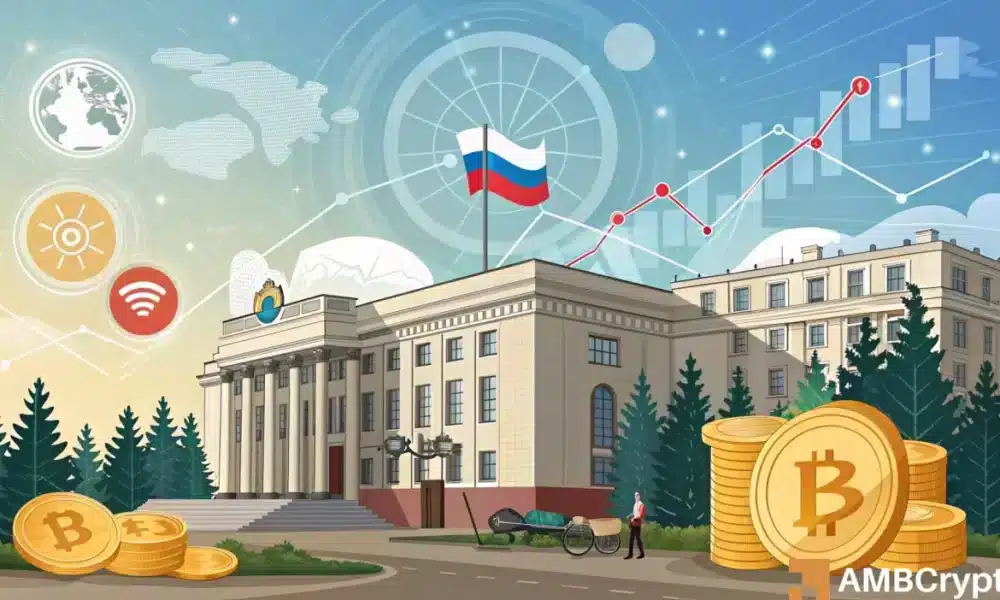The Evolving Landscape of Cryptocurrency Regulation in Russia: Opportunities and Challenges
In recent months, the Central Bank of Russia (CBR) has signaled a notable shift in its stance toward cryptocurrencies, moving from a stringent prohibition to a more cautious acceptance. During 2022, the CBR advocated for a blanket ban on all forms of cryptocurrency issuance, trading, and mining due to concerns surrounding financial stability and the sovereignty of the nation’s monetary policy. However, recent regulatory changes indicate a notable pivot, suggesting that Russia may not be entirely closing the door on digital assets but is instead redefining its approach to them.
The CBR has recently proposed easing certain restrictions on mutual fund investments, permitting qualified investors to allocate up to 10% of their portfolios to crypto-linked derivatives. By removing long-standing barriers that hindered mutual funds from accessing cryptocurrencies, the bank reflects a desire to integrate digital assets into the formal financial framework while maintaining close oversight. This regulatory adjustment is framed as part of a broader initiative to enhance the spectrum of available financial instruments for retail mutual funds, indicating a nuanced approach to incorporate cryptocurrency in regulated markets.
Despite this progressive inclination, it’s essential to understand that the use of cryptocurrencies for daily transactions remains strictly prohibited in Russia. As it stands, Russian residents cannot utilize digital assets for everyday payments, a regulation that is unlikely to change in the near future. This prohibition emphasizes the CBR’s focus on controlling the cryptocurrency landscape, ensuring that investments are channeled through approved avenues only.
Interestingly, the current regulatory landscape suggests that Russia is not outright rejecting cryptocurrencies but is cautiously crafting a tightly monitored crypto ecosystem. Over the past year, a framework for experimental digital-asset transactions has been tested, with select crypto derivatives receiving approval and access granted solely to wealthy, pre-approved investors. This selective approach illustrates the government’s intention to manage how and where cryptocurrencies can operate while discouraging illegal activities that have emerged in parallel to these developments.
As the CBR opens limited channels for regulated crypto investments, there has been a simultaneous push for stricter enforcement against unauthorized crypto-related activities. The Ministry of Digital Development has proposed significant penalties for illicit miners, including equipment confiscation and monetary fines. This dual focus—permitting regulated investment while cracking down on illegal practices—demonstrates a complex interplay between acceptance and control within Russia’s evolving crypto landscape.
Senior Presidential Adviser Anton Kobyakov has voiced concerns regarding the strategic use of stablecoins by countries like the United States, highlighting Russia’s broader geopolitical considerations regarding digital assets. Lawmakers are increasingly advocating for cryptocurrency to be regarded as a geopolitical asset, with proposals such as establishing a national Bitcoin reserve under consideration. While President Putin has acknowledged the potential of cryptocurrencies, Russia remains adamant about restricting their usage among ordinary citizens, suggesting a long-term strategy of integrating digital assets into state mechanisms without granting broader public access.
In conclusion, the CBR’s recent regulatory changes illuminate a multifaceted approach to cryptocurrencies in Russia, characterized by cautious experimentation and stringent controls. As the nation grapples with its financial strategy in a complex international landscape, the cryptocurrency ecosystem appears poised for gradual evolution. While opportunities for regulated investments in crypto-linked instruments arise, the overarching policy remains focused on sustaining financial control and minimizing risks associated with digital currencies.


